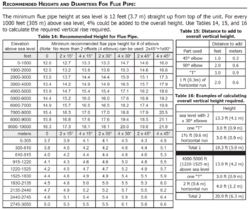My wife and I live in a 930 sq ft, single-story house. Our fireplace is located in the living room. Our bedroom and my office is down a short hallway. We would like to warm the house throughout the night, but not heat ourselves out of the living room where our fireplace is when it is running in the evenings. Local dealers sell Lopi, Napoleon and Regency inserts. We live in Colorado at 6,100 ft elevation where I assume, like combustion engines in automobiles, these wood inserts would be less efficient.
We are considering
The answer is the most inexpensive, the Regency seems to have longer burn times but more maintenance to to the catalytic element. The Napoleon is a bit larger. We may also be able to enjoy a 26% tax credit on the Smaller Regency i1500, larger Lopi Medium Flush etc due to their HHR efficiency ratings.
Questions:
Paul
We are considering
The answer is the most inexpensive, the Regency seems to have longer burn times but more maintenance to to the catalytic element. The Napoleon is a bit larger. We may also be able to enjoy a 26% tax credit on the Smaller Regency i1500, larger Lopi Medium Flush etc due to their HHR efficiency ratings.
Questions:
- Can I run a larger medium-sized stove cooler, to get longer run times, but not cause problems with soot in the flue?
- Will a catalyst stove like the small regency allow me to have noticeably longer burn times than something like the not catalytic Lopi Answer?
- Will our high elevation create enough inefficiency that the Medium size stoves are a are a better choice for our small home?
Paul



